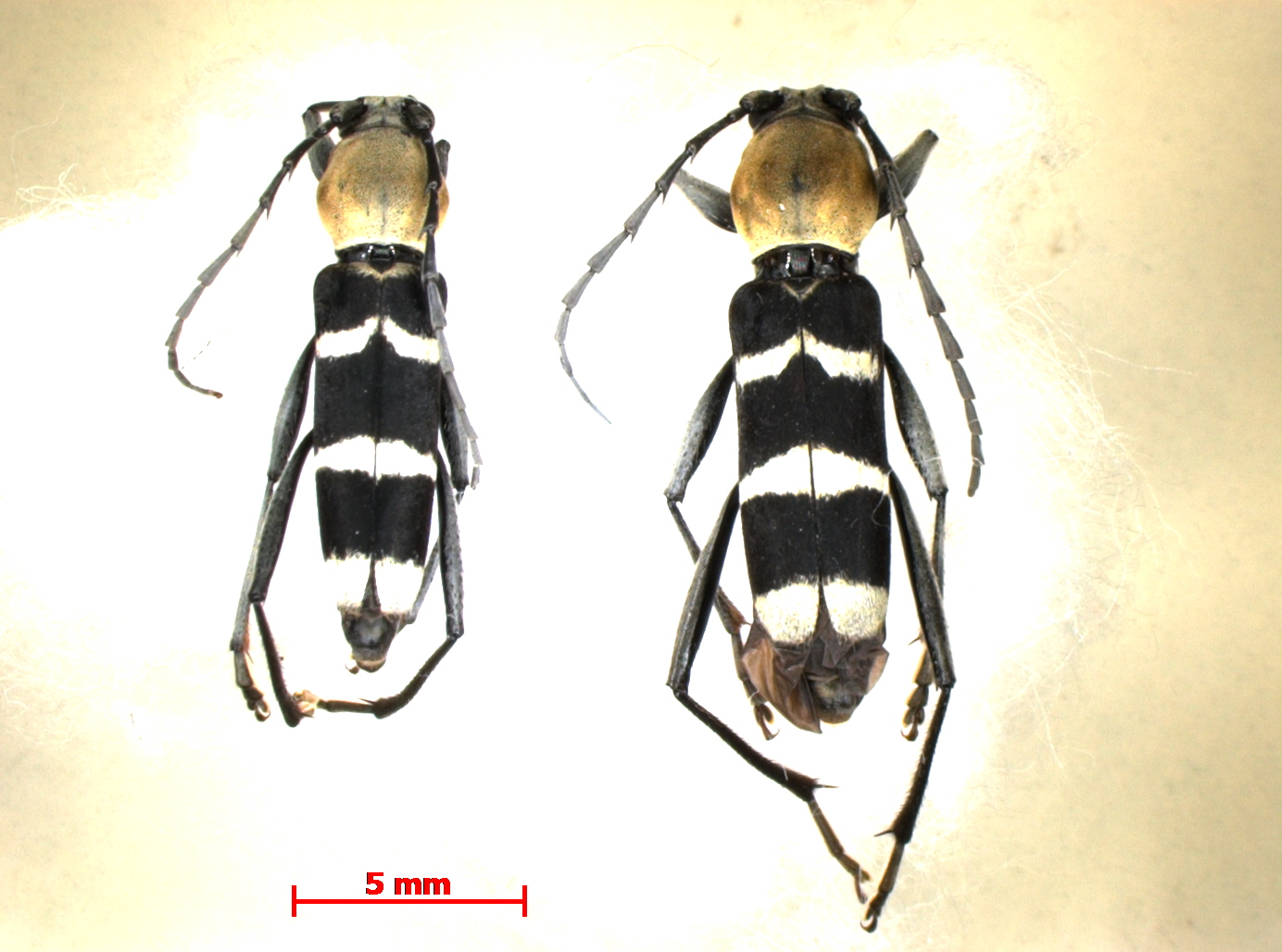| T O P I C R E V I E W |
| Zhu |
Posted - 01/02/2013 : 02:41:12

466.87 KB |
| 5 L A T E S T R E P L I E S (Newest First) |
| Zhu |
Posted - 04/02/2013 : 02:56:03
Thanks a lot. It is very close. Elytra acuated outsides, the three bands more or less attenuated laterally, but the apical two touch the lateral margin. The breast not spotted but all white, and the abdomen first segment all white too. Maybe it is a subspecies. However the D. chrysoderes is not available. |
| Francesco |
Posted - 01/02/2013 : 15:35:16
It seems to be close to Demonax chrysoderes (White, 1855) from Australia.
Here White's original description (p. 285).
This specimen is evidently wrongly identified as chrysoderes. Actually, it is a Chlorophorus. 
|
| Francesco |
Posted - 01/02/2013 : 15:15:41
Indeed. I noticed this fact, but I have to check the catalog by Bigger & Schoefield (1983) in order to restrict the research field.
Unfortunately, it is about a very large genus...
|
| Zhu |
Posted - 01/02/2013 : 15:07:08
Thanks. I am greatly moved that you replied so early in the morning.
It seems the species doesn't match any in Gressitt's article about New Guinea's longicorns.
It only have three bands instead the key about Demonax described species with 4bands. And above in fact my colleague Qian Lu posted. |
| Francesco |
Posted - 01/02/2013 : 06:04:51
Nice to meet you Zhu!
They belong to Demonax. I look for the species. |


